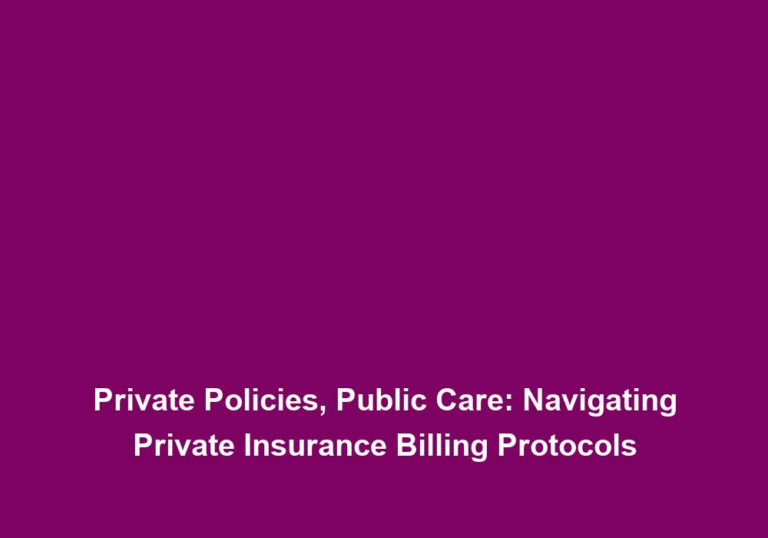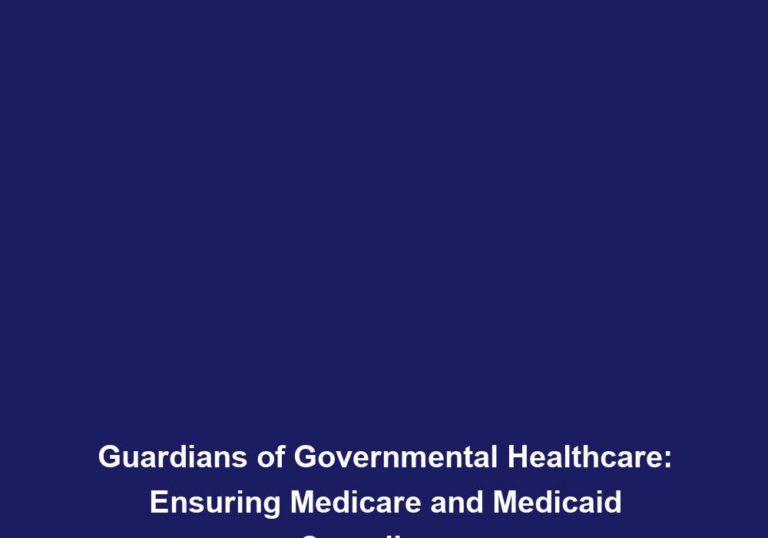Mastering the Maze: Understanding Private Insurance Billing Protocols
Private insurance billing can often feel like navigating a complex maze. With numerous protocols, rules, and regulations, it can be challenging for healthcare providers and patients alike to understand the ins and outs of private insurance billing. In this article, we will delve into the intricacies of private insurance billing protocols to help demystify the process and provide clarity for all involved parties.
The Basics of Private Insurance Billing
Private insurance billing refers to the process of submitting claims for healthcare services rendered to patients covered by private insurance plans. These plans are typically obtained through employers or purchased individually, and they vary in coverage, deductibles, and copayments. To ensure reimbursement for their services, healthcare providers must adhere to certain protocols when billing private insurance.
1. Verify Insurance Coverage
Before providing any healthcare services, it is crucial to verify the patient’s insurance coverage. This step is essential to avoid unexpected claim denials and ensure that the services provided are eligible for reimbursement. Verifying insurance coverage can be done by contacting the insurance company directly or utilizing online portals provided by the insurance company. By confirming the coverage beforehand, healthcare providers can avoid potential financial hardships for both the patients and themselves.
2. Obtain Prior Authorization
Certain medical procedures, treatments, or medications may require prior authorization from the insurance company. Prior authorization ensures that the recommended treatment is medically necessary and covered by the insurance plan. Failing to obtain prior authorization can result in claim denials and potential financial hardships for both patients and providers. It is important for healthcare providers to familiarize themselves with the specific requirements of each insurance plan and obtain the necessary authorizations to avoid complications and ensure reimbursement.
3. Accurate Documentation
Accurate and detailed documentation is essential for successful private insurance billing. Healthcare providers should maintain comprehensive patient records, including the patient’s medical history, diagnosis, treatment plan, and any other relevant information. Accurate documentation not only supports the billing process but also helps in case of audits or disputes with insurance companies. It is crucial to record all relevant details accurately and completely to ensure proper reimbursement and to provide a clear and comprehensive picture of the services rendered.
4. Code Correctly
Coding plays a vital role in private insurance billing. Healthcare providers must use the appropriate medical codes to describe the services rendered accurately. The two main coding systems used in healthcare are the International Classification of Diseases (ICD) for diagnoses and the Current Procedural Terminology (CPT) for procedures and services. It is crucial to stay updated with the latest coding revisions to ensure accurate billing. Using incorrect codes can lead to claim denials or underpayment, so healthcare providers should regularly review and update their coding practices.
5. Submitting Claims
Once the services are provided, healthcare providers must submit claims to the insurance company for reimbursement. The claims should include all necessary information, such as patient demographics, insurance details, provider information, service dates, and the codes corresponding to the services rendered. Timely submission of claims is essential to avoid potential claim rejections or delays in reimbursement. Healthcare providers should establish a systematic process for claim submission, ensuring that all required information is included and that the claims are submitted promptly.
Reimbursement Models in Private Insurance Billing
Private insurance billing operates under various reimbursement models, each with its own set of protocols. Understanding these reimbursement models can help healthcare providers optimize their billing processes and maximize reimbursement.
1. Fee-for-Service (FFS)
The fee-for-service model is the most traditional reimbursement model in private insurance billing. In this model, healthcare providers are reimbursed for each service or procedure performed based on a pre-determined fee schedule. Providers must bill the insurance company for each service rendered, and reimbursement is typically made based on the allowed amount specified in the insurance plan. It is important for healthcare providers to accurately document and code the services provided to ensure appropriate reimbursement under the fee-for-service model.
2. Capitation
Capitation is a reimbursement model where healthcare providers receive a fixed payment per patient enrolled in their network, regardless of the services rendered. Under this model, providers are responsible for delivering all necessary healthcare services to their patients within the agreed-upon fee. Capitation payments are usually made on a monthly or quarterly basis. Healthcare providers operating under a capitation model must carefully manage their resources and ensure that they provide necessary care while controlling costs to maximize their reimbursement.
3. Bundled Payments
Bundled payments, also known as episode-of-care payments, involve a single payment for all services provided during a specific period or related to a particular condition. Instead of billing for each individual service, healthcare providers receive a lump sum payment for the entire episode of care. Bundled payments promote cost-effective and coordinated care. Healthcare providers must carefully track and document all services provided within the bundled payment arrangement to ensure accurate reimbursement and demonstrate the value of the care delivered.
4. Value-Based Payments
Value-based payments focus on the quality and outcomes of healthcare services rather than the quantity of services provided. In this model, providers are rewarded based on predefined performance metrics, such as patient satisfaction, improved health outcomes, and cost savings. Value-based payments aim to incentivize high-quality care and improve overall healthcare delivery. Healthcare providers operating under a value-based payment model must track and report the required metrics accurately to demonstrate the value they bring and optimize their reimbursement.
Common Challenges in Private Insurance Billing
Private insurance billing comes with its own set of challenges that both healthcare providers and patients should be aware of. Understanding these challenges can help navigate the billing process more effectively and minimize potential errors or complications.
1. Complex Policies and Guidelines
Private insurance companies often have intricate policies and guidelines that healthcare providers must follow when billing for services. These policies can vary widely from one insurance company to another, making it challenging to stay updated and compliant with all the requirements. It is essential for providers to familiarize themselves with the specific policies of each insurance company they work with to ensure accurate billing. Providers should regularly review the policies and guidelines and seek clarification from the insurance companies when necessary.
2. Claim Denials and Rejections
Claim denials and rejections are common occurrences in private insurance billing. These can happen due to various reasons, such as missing information, coding errors, lack of prior authorization, or policy exclusions. To minimize claim denials and rejections, healthcare providers should diligently review and double-check all claims before submission, ensuring that they meet all the necessary requirements. It is important to have a robust internal review process in place to catch any errors or omissions before claims are submitted.
3. Lengthy Reimbursement Processes
The reimbursement process in private insurance billing can be lengthy and complex. After submitting a claim, providers often have to wait for a significant period before receiving reimbursement. Delays in reimbursement can disrupt cash flow and impact the financial stability of healthcare providers. It is crucial to monitor the status of claims and follow up with insurance companies to ensure timely reimbursement. Providers should establish clear communication channels with the insurance companies and proactively inquire about the status of their claims.
4. Communication with Insurance Companies
Effective communication with insurance companies is essential for smooth private insurance billing. Providers may need to clarify policies, inquire about claim statuses, or resolve billing disputes. Building a professional relationship with insurance company representatives can facilitate open lines of communication, helping to resolve issues more efficiently. Healthcare providers should maintain accurate contact information for the insurance companies they work with and establish a designated point of contact for any communication related to billing.
In conclusion, understanding private insurance billing protocols is vital for healthcare providers and patients alike. By following the necessary steps, adhering to coding guidelines, and staying updated with the latest policies, providers can navigate the maze of private insurance billing with confidence. This ensures timely reimbursement for services rendered and promotes a smooth and efficient healthcare system for all parties involved.






